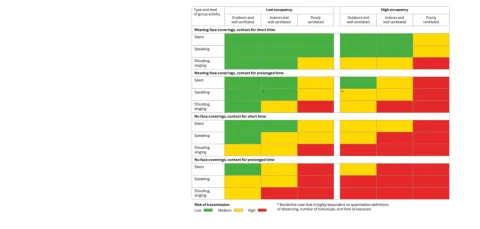
Original article here.
Chapter 6 of the 2021 Regulatory Policy Outlook (https://oe.cd/pub/RPO2021) discusses the importance of risk-based regulation, aiming at ensuring that rules and enforcement methods are science-based, targeted, effective, and efficient. Rules and procedures that do not correspond to genuine risks for health, environment, safety, etc. tend to produce costs and burden without real benefits and having repercussions on trust in governments and harming the economy. This makes risk-based regulation an essential priority.
The Covid-19 pandemic has further underlined the inability of badly designed regulations to effectively prevent harmful outcomes and shed light on the urgent need for a transformation in the way rules are made and implemented. Regulation in times of crisis requires major adjustments to processes and practices. For instance, in some contexts shortcomings - in testing, risk and impact analysis, stakeholder consultation or cooperation with other governments – regulations have taken their toll on companies and individuals.
Interesting findings that can serve as a starting point of the reading of the chapter are the following:
· Following the Indicators of Regulatory Policy and Governance (iREG) survey, which presents up-to-date evidence on the regulatory policy and governance practices of OECD member countries, most OECD countries do not have a systematic risk-based regulation approach based on quantitative assessments and covering all sectors – even though the majority do some risk assessments for some type of rules.
· If we look at regulatory inspections, the lack of systematic risk proportionality is visible. Indeed, the resources allocated to enforce regulations vary hugely between different OECD countries, even at comparable income level. There is no systematic benchmarking of risks and resources to inform allocation of regulatory resources. This shows the need of further research and promotion a path towards truly risk-based, risk-focused, and risk-proportional regulatory delivery.
· The uneven spread of risk-based regulation does not mean that there has not been significant progress in recent years. An increasing number of administrations is relying on data, which is the very foundation of risk-based regulation. In previous years, availability of data used to be an issue for more systematic and thorough risk analysis. Today digital government developments, progress in computing power and methods, spread of technology and skills, evolution of systems in public administration etc. have led to a situation where these constraints are much reduced, and new and innovative practices can be implemented successfully. In the context of the pandemic, the need to limit contagion risks has led to the use of remote inspection tools and other more targeted, data-driven approaches.
Challenges in responding to Covid-19 have shown the need for risk-based regulation
During the initial months of the pandemic there was poor risk communication, and many public statements, later contradicted by facts, led to significant loss of credibility. Pandemic response required massive spikes in supplies, testing, etc. – which were often hampered by non-risk-based rules. Non-Pharmaceutical Interventions (NPIs) like physical and social distancing frequently were often formalistic, lacked focus on real contagion risks, and frequently failed to educate the public about safe conduct. Recovering, and preparing for future crises, requires risk mechanisms that need to be properly understood and are science based, along with resources well used on the right aspects and places.
Although airborne transmission is demonstrated since late Spring 2020, very few regulations have been developed targeting air safety. Real risk-based regulation is indispensable to escape this pandemic and prevent future ones. The essay “Regulatory Delivery Lessons from COVID-19 Responses” by Florentin Blanc highlights the crucial importance of indoor air safety to prevent spread of infectious respiratory diseases and the need to develop risk-based and risk-proportional regulatory systems to improve air safety (https://www.theregreview.org/2021/05/17/blanc-urgent-need-indoor-air-qu…)
Below is a science-based matrix of Covid-19 transmission risk that could form the basis for effective, risk-based regulation (https://bit.ly/30VejPz)[1].
In Belgium, the Superior Health Council recommended, in its opinion no. 9616 of 3 February 2021, to aim for a CO2 level in enclosed spaces of less than 800 ppm, preferably even lower. The Ventilation Task Force of the Corona Commission subsequently developed a series of recommendations on ventilation and indoor air quality in the context of the COVID-19 pandemic, making ventilation a key priority in Belgium to fight the spread of the virus. At regional level, a pilot project for the continuous measurement of CO2 in classrooms air is ongoing in Wallonia (https://bit.ly/3nUnk4t and https://bit.ly/313A7c3).
Finally, the US Centre for Disease Prevention and Control recently published an online Interactive Ventilation Tool that can help citizens understand how good ventilation can limit the spread of COVID-19 (https://bit.ly/32BB5gg). It is worth checking out!
Want to learn more? Read more in the Regulatory Policy Outlook 2021: https://oe.cd/pub/RPO2021.
[1] For a more updated graphical representation of relative risks of different situations, please check the matrix at the following link: https://bit.ly/3HVFNFB
OECD Policy Consultant
Submitted on Thu, 12/02/2021 - 10:16


